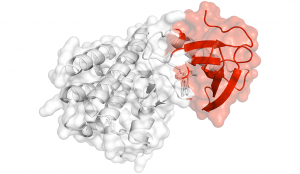
Yale researchers exploring the structure of proteins have found evidence of how some genes drive the progression of cancer.
By Bill Hathaway
From Yale News https://news.yale.edu/2019/09/03/yale-researchers-find-new-cancer-gene-drivers
Scientists have long searched for “driver” genes that fuel the progression of cancer, but existing technology has had a hard time separating mutations that are true drivers from others that are simply “passengers,” not directly involved in spread of tumors. However, a team of Yale researchers has developed a model that marries biophysics, advanced gene sequencing technology, and statistics to identify at least 200 new genes which may drive cancer progression, they report Sept. 2 in the journal Proceedings of the National Academy of Sciences.
Most drivers identified thus far have come by identifying the over-representation of mutations in areas of genomes of cancer patients. Scientists have also studied the static structure of proteins influenced by these mutations to identify potential driver genes. Sushant Kumar and Declan Clarke in the lab of Mark Gerstein, the Albert L Williams Professor of Biomedical Informatics and professor of molecular biophysics & biochemistry, and of computer science, went a step further. By studying dynamic 3D models of proteins in motion, they identified key parts of proteins that harbor a significantly high frequency of cancer-associated mutations. Using this method, they identified 434 potential driver genes, many of which have been known to researchers.
Leveraging protein dynamics to identify cancer mutational hotspots using 3D structures
Significance
The identification of cancer drivers is essential for realizing the goal of precision medicine in cancer. By integrating 3D protein structures and dynamics, we describe a framework to identify cancer driver genes using a sensitive search of mutational hotspot communities in 3D structures. Our workflow identifies previously identified driver genes as well as unidentified putative drivers.
Abstract
Large-scale exome sequencing of tumors has enabled the identification of cancer drivers using recurrence-based approaches. Some of these methods also employ 3D protein structures to identify mutational hotspots in cancer-associated genes. In determining such mutational clusters in structures, existing approaches overlook protein dynamics, despite its essential role in protein function. We present a framework to identify cancer driver genes using a dynamics-based search of mutational hotspot communities. Mutations are mapped to protein structures, which are partitioned into distinct residue communities. These communities are identified in a framework where residue–residue contact edges are weighted by correlated motions (as inferred by dynamics-based models). We then search for signals of positive selection among these residue communities to identify putative driver genes, while applying our method to the TCGA (The Cancer Genome Atlas) PanCancer Atlas missense mutation catalog. Overall, we predict 1 or more mutational hotspots within the resolved structures of proteins encoded by 434 genes. These genes were enriched among biological processes associated with tumor progression. Additionally, a comparison between our approach and existing cancer hotspot detection methods using structural data suggests that including protein dynamics significantly increases the sensitivity of driver detection.
(For the rest of the article, follow this link.)








